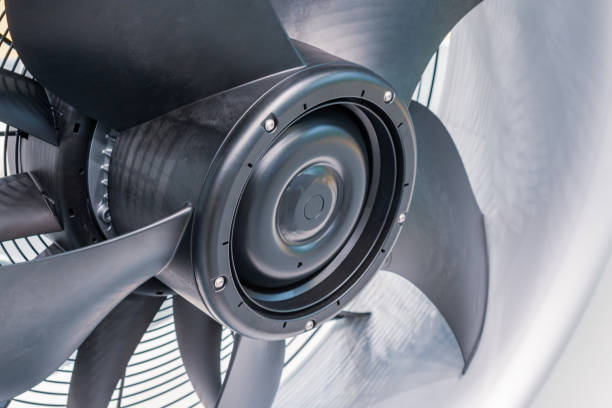Generally, overheating of VFDs is both common and essential, for it can cause a lot of downstream operational costs, increased maintenance expenses, and decreased lifespan of the equipment. While the VFDs do help in managing the motor speeds, they are very sensitive to overheating and do make and cause a lot of VFD overheating problems. At the forefront of these fan cooling issues is the VFD fan – a component that not only controls and maintains the proper operational temperatures inside but is needed for the drives ventilation.
In this guide, we’ll discover the common errors that lead to overheating of VFDs, the maintenance fans do in cooling overheating issues, and why choosing a well suited component or talking to a thermoelectric cooler supplier can greatly improve the performance of the device.
The Importance of VFD Fans for the Lifespan of the System
VFDs control and manage electrical power supplied to a motor, for example, controlling the speeds of a motor, but this function does come with its drawbacks, for it generates a lot of heat. A VFD fan assists in cooling the system by managing the temperature of the drive enclosure, preventing critical components such as control boards, capacitors, and IGBTs from overheating and damaging.
Inadequate airflow can result in thermal stress leading to:
- Drives shutting down abruptly
- Injuries or alarms signaling incorrectly
- Long-lasting harm to critical sensitive parts within electronic devices
Business-to-business clients from fields like automation, HVAC, and industrial processing understand the need for dependable cooling systems. Reliable cooling has become an area of focus for businesses as they seek solutions from a trusted thermoelectric cooler supplier to replace traditional fan systems used in specialized environments and areas.
Early Indications of VFD Fan Issues
Preventing unplanned business halts and costly repair work can be achieved by addressing early signs of VFD fan issues. The following list outlines the changes that could indicate issues with your cooling system:
- Changes to audible noises: Damage to motor parts like blades and bearings can result in rattling and grinding sounds.
- Decreased airflow: The rotation caused by a fan motor can be restricted due to dust build up or failure of the motor.
- Lowered drive temperature alarms: Consistent overheating temperature faults signal poor fan performance.
- Unsuitable shutdowns: Certain VFDs are set to disable power when internal temperatures exceed a pre-defined safety limit.
Fans exhibiting these behaviors should be tested, and if necessary, should be replaced or modified with a stronger cooling solution, such as thermoelectric modules.
System VFD Cooling Do It Yourself Troubleshooting Checklist
Here’s a step-by-step troubleshooting guide to keep your VFD working within the ideal temperature parameters.
Inspect the Fan Blades and Housing
Dirt, debris, physical damage can restrict airflow and imbalance the fan. Always ensure power is turned off, and clean the fan thoroughly. While performing this clean, ensure that there are no bent blades or cracked housings.
Test the Fan Motor
With a multimeter, test the voltage across the fan’s motor leads. No voltage could point to wiring issues, a faulty relay, or a blown internal fuse. A fan receiving power but not spinning indicates motor burnout.
Check Ambient and Enclosure Temperatures
Measure the temperature around the VFD and the interior of the cabinet. Even operational fans cannot help in certain cases if ambient temperatures surpass set limits. In such cases, consulting a thermoelectric cooler supplier would be more beneficial.
Evaluate Airflow Paths
Overly tight enclosure spacing or improper mounting can lead to cramped airflow. Make sure that both intake and exhaust vents are unobstructed; also ensure that heat is not being recirculated within the enclosure.
Check Control Logic and Fan Settings
Certain VFD fans are regulated by a thermostat. Make sure the temperature set for activating the fan hasn’t been inappropriately modified in the software. Also, confirm that updates to the firmware or changes to the system architecture have not modified fan operation.
When to Look for Other Options
In most VFD setups, fans are used as the primary method of cooling. However, they might not work very well in highly sensitive or extreme environments. If your application has to deal with high temperatures, heavy exposure to vibrations, moisture, or contaminants, perhaps it is time to look for other methods.
One such method is cooling by thermoelectrics, which is gaining popularity. Working with a thermoelectric cooler supplier lets you tap into small, solid state systems that:
- Have no moving parts, making them silent.
- Can be used in any direction.
- Need very little upkeep.
- Are easy to maintain.
- Provide excellent control over temperature.
Modules for thermoelectrics can be mounted in VFD cabinets to form a closed-loop cooling system. This is ideal for cleanrooms, food processing plants, or solar installations in deserts.
Recommended Procedure for Managing Temperature Over Extended Timeframes
Aside from enhancing or replacing the VFD fan, good thermal management involves looking at the entire electrical system:
- Maintain regularly: Inspect and clean filters, examine wiring, and check fan performance every three months.
- Install temperature sensors: These can also issue alerts and initiate auxiliary cooling.
- Use appropriate enclosure ratings: NEMA or IP rated enclosures mitigate cooling system dust and water ingress damage.
- Plan for redundancy: A backup fan or secondary cooling device in critical systems mitigates catastrophic failures.
Collaborating with electrical engineers and sourcing professionals, particularly those connected to a reliable thermoelectric cooler supplier, enables the formulation of scalable, efficient, and dependable stratagems.
Conclusion: Proactive Cooling Equals Proactive Productivity
A VFD fan is not simply a rotating blade; it serves as a vital element in your industrial ecosystem. Underperformance or failure can have severe consequences on productivity and equipment health. Businesses can protect operations, decrease maintenance expenses, and improve equipment lifespan by thermally engineering overheating solutions and collaborating with professionals such as thermoelectric cooler suppliers.
Beyond 2025, proactive thermal management will transition from luxury to necessity. Ensure adequate cooling of VFDs, monitoring of fans, and readiness of backup strategies.

